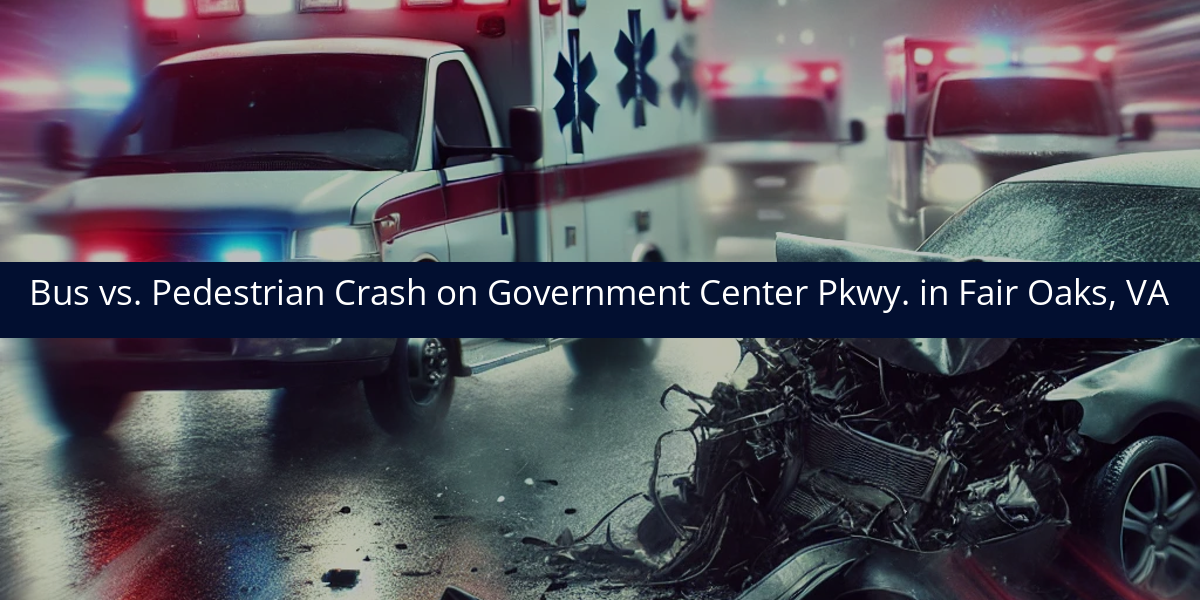Authorities in Virginia reported that a man was hospitalized with life-threatening injuries Tuesday night after being struck by a Fairfax Connector bus at the intersection of Government Center Parkway and Monument Drive near Fair Oaks. According to local officials, the crash occurred around 8:22 p.m., and the bus driver remained at the scene. The pedestrian remains hospitalized, and police said the incident is under active investigation with potential charges pending.
When a crash involves a commercial passenger vehicle and a pedestrian, investigators focus heavily on driver awareness, visibility, and compliance with traffic control devices. Commercial bus operators are held to a heightened standard of care given their training and the potential risks associated with large vehicles in populated areas.
What Investigators Will Work to Determine
Investigators will begin by reviewing onboard video footage from the Fairfax Connector bus to determine the pedestrian’s location, timing, and movement in the moments before impact. They will also analyze the bus’s telematics or event data system to identify speed, throttle position, and braking activity. This data will help confirm whether the driver reacted appropriately or whether delayed perception played a role.
Authorities will evaluate whether the bus had the right-of-way and whether the pedestrian was in a designated crosswalk. Intersection lighting, signal timing, and surrounding visibility conditions will also be reviewed, as crashes in the evening often involve reduced sight distance and glare from nearby traffic or streetlights.
Examining Driver Fitness and Conduct
The bus driver’s work schedule, hours-of-service compliance, and recent duty logs will be examined to verify that fatigue did not contribute to the collision. Investigators will also assess whether distraction, such as interaction with onboard controls or external devices, was a factor.
As part of standard procedure for serious crashes involving public transportation, officials will conduct toxicology testing and review the driver’s history of safety or disciplinary incidents. Training and certification records from the transit agency will also be reviewed to confirm ongoing compliance with federal and local safety standards.
Evidence That Should Be Examined
In addition to onboard video and telematics data, investigators will analyze physical evidence at the scene, including tire marks, debris location, and the pedestrian’s position relative to crosswalk markings. Eyewitness statements and nearby surveillance footage from adjacent intersections or businesses may also help establish the pedestrian’s movements and whether the driver had a clear line of sight.
Why a Detailed Review of Driver Awareness Is Critical
Crashes involving pedestrians and commercial vehicles often come down to seconds of reaction time. Bus drivers are expected to anticipate potential hazards, especially in urban intersections where foot traffic is common. A complete investigation will help determine whether inattention or inadequate response contributed to this serious collision.

 call us
call us  Email Us
Email Us  Text us
Text us  AI-SEARCH
AI-SEARCH